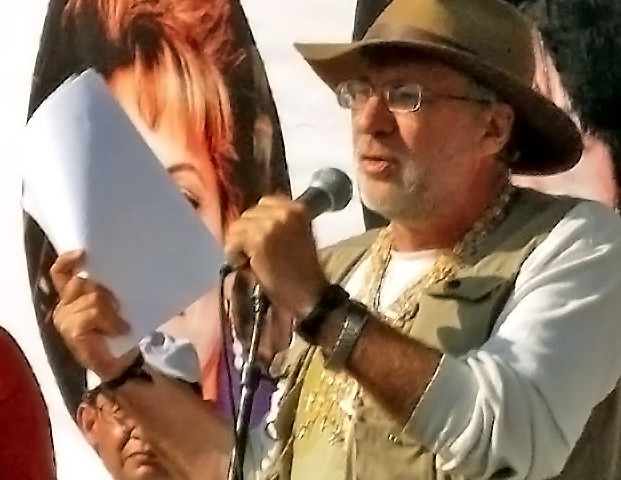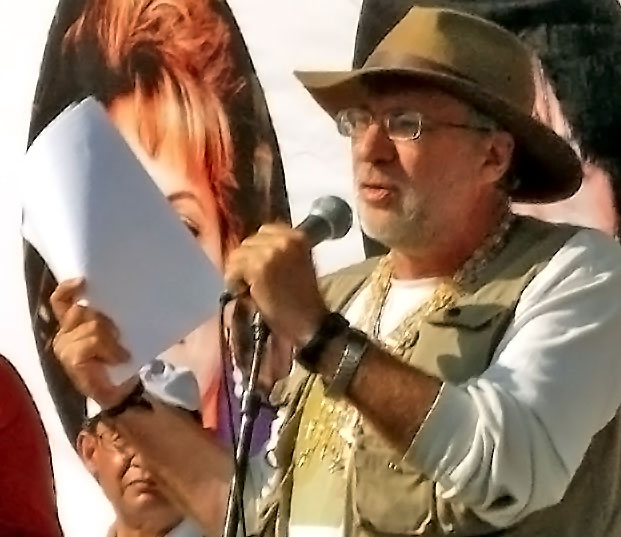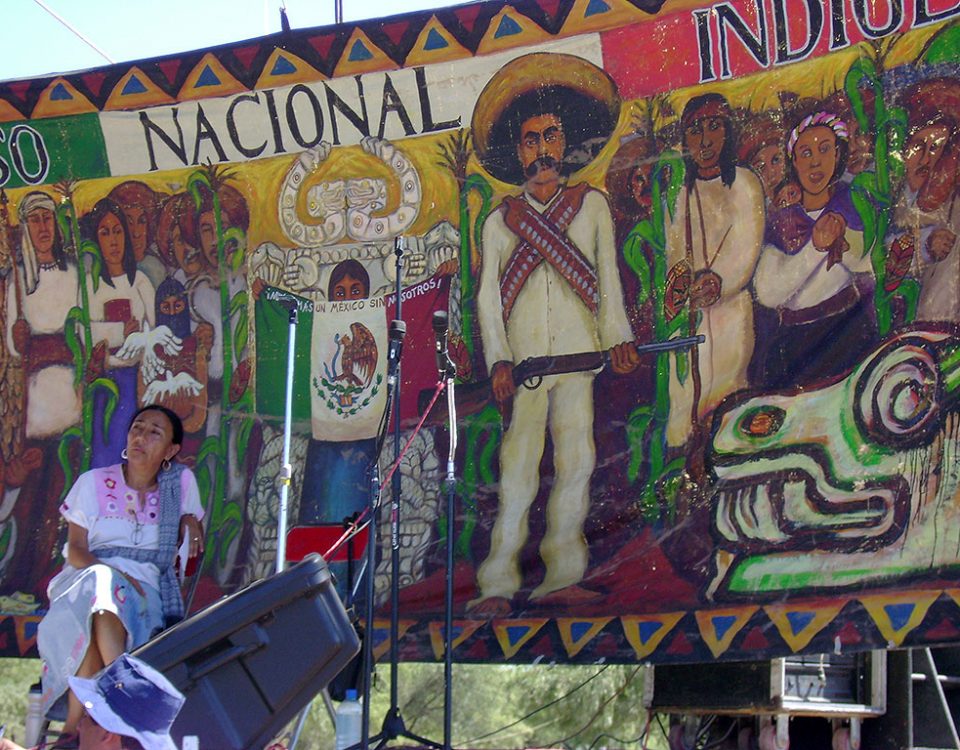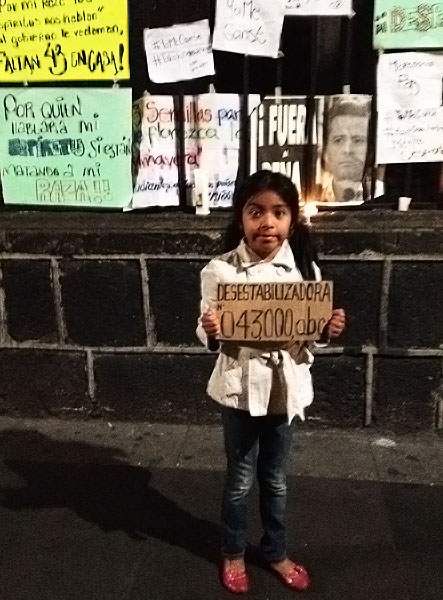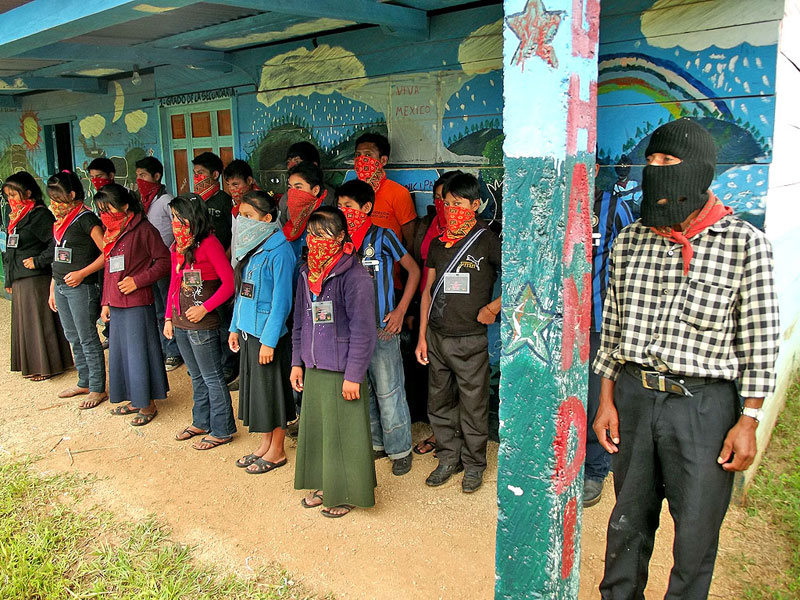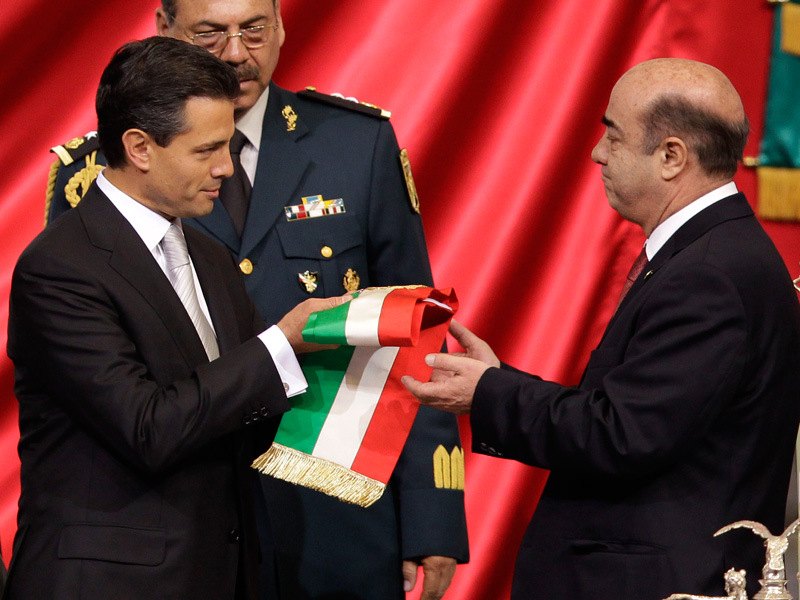2011
03/01/2012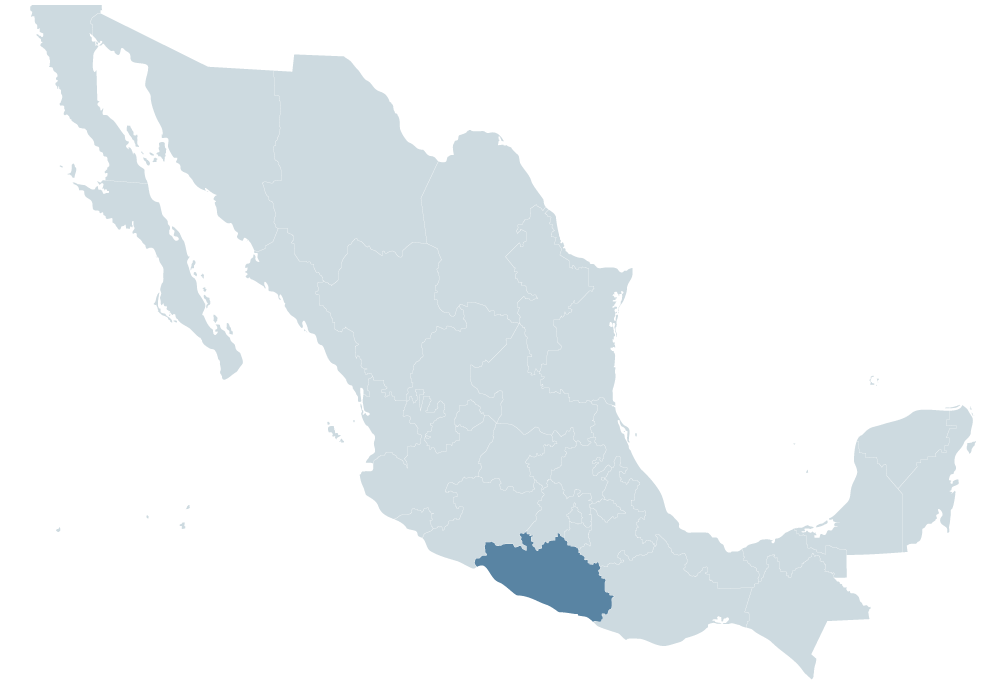
LOCATION
06/02/2012The strategy of the campaign against drug-trafficking initiated in 2007 which, according to President Felipe Calderón, “is not a war,” has resulted as of the end of 2011 in the death of more than 50,000 persons, the creation of tens of thousands of orphans, the disappearance of thousands, and the displacement of tens of thousans. In light of this, Calderón has continued speaking of “collateral damage” and the “old story about human rights,” claiming that 90% of the dead are drug-traffickers.
Challenging this perception, one of the catalysts of social discontent regarding this strategy has been the Movement for Peace with Justice and Dignity (MPJD), which was born in April of last year following the call to organize by poet and journalist Javier Sicilia. On 7 and 8 May were held marches for peace with justice and dignity in different parts of Mexico, in accordance with Sicilia’s call. On this occasion, support-bases of the Zapatista Army of National Liberation (EZLN) succeeded in filling the cathedral plaza in San Cristóbal de Las Casas in Chiapas, expressing by means of this their support to said process and their rejection of an “absurd war that leads nowhere.”
In June, the MPJD organized the Citizens’ Caravan for Peace with Justice and Dignity, also known as the “Caravan of Consolation for the route of pain and blood” which traveled nearly 3,000 kilometers from Cuernavaca to Ciudad Juárez. Subsequently, several members of the Movement met with President Feliipe Calderón and members of his cabinet—a decision that implied a distancing from other civil-society actors. For this reason were organized work-tables to examine questions such as attention and continuation of cases of procuration of justice and general revision of the national security strategy, among other questions. A second meeting with the federal government was held in October. A third meeting was never agreed to, and so it is unclear if this process of dialogue will continue.
Prior to this meeting, the Movement had carried out a “Caravan to the South” passing through the states of Guerrero, Oaxaca, Chiapas, Tabasco, Veracruz, and Puebla. Once the caravan ended, the Movement concluded that “during these 11 days we have seen that the wound opened in Ciudad Juárez—the result of the failed war strategy of President Calderón—has been extended like gangrene toward the south of the country, there to join the ancestral pain that the Indian peoples and the communities of the south experience.”
In light of this national panorama, it is worrying that there is now a new process of militarization on the border of Chiapas with Guatemala. The U.S. Drug Enforcement Agency has recommended that the Mexican government militarize the southern border of the country in a manner similar to that of the northern border. In this sense, and in an unusual manner, the commander of the seventh Military Region of the entity has reported that 14,000 soldiers have been stationed in the state, and that this number had reached 40,000 following the insurrection of the EZLN. He announced the creation of two new military bases, adding that the threats seen in the border region have to do with bands of organized crime. He firstly denied the existence of groups of armed civilians, then claimed that these were not dangerous.
2011 was a year marked by several communiques from the EZLN, following a silence maintained since the end of 2008. The first was in January to lament the death of the bishop emeritus of San Cristóbal de Las Casas, Samuel Ruiz García. The majority of the following letters were part of an exchange between Subcomandante Marcos, military chief of the EZLN, and the Mexican philosopher Luis Villoro which made public the Zapatista reading of what has been occuring in Chiapas and the country in general: a radiography of the war declared by the federal government on organized crime and its consequences, political context, and repression in the state and at the national level, the coming elections of 2012, and the few expectations that these will bring about profound change, among other questions.
In his 12 April communiqué, Subcomandante Marcos also strongly criticized the current Chiapas state government led by Juan Sabines Guerrero, which “persecutes and represses those who do not join the false chorus to praise the lies made government, a government that persecutes human-rights defenders in the Coast and Highlands of Chiapas and the indigenous of San Sebastián Bachajón who refuse to prostitute their land, that encourages the action of paramilitary groups against Zapatista indigenous communities.”
The principal axis of conflict in the state continues to revolve around the subject of land and territory and the development of autonomous social processes. The Zapatista Good-Government Councils (JBGs) have released a particularly high number of denunciations. In the majority of cases, conflicts originate presumably in disputes over land “recuperated” by the Zapatistas, or pass from being threats to loot lands and deny rights. These conflicts have included armed aggressions against Zapatista support-bases. The Councils locate these events in a larger context of a recrudicimiento of the counter-insurgent strategy targeting them, one in which have participated several actors and organizations close to the government.
Another paradigmatic case is that of the latent tension that has gripped the region of Agua Azul for two years, one that escalated newly at the beginning of 2011. On 2 February, a confrontation between indigenous adherents to the Other Campaign and a group of PRI-affiliated indigenous persons over the control of a checkpoint at the tourist center of the Agua Azul waterfalls left one dead on the official side and at least two injured. 117 adherents to the Other Campaign from the municipality of Chilón were subsequently detained, of which 107 were released two days later. It should be noted that the confrontation occurred after the visit of President Calderón to the state, in observance of the “Year of Tourism” proclaimed by the federal government for 2011. The eco-archaeological touristic attractions of Chiapas have for many years been the object of conflict among opponents, party-members, and actors involved with the state government’s development projects, in addition to private national and international capital. Although the remaining prisoners from Bachajón were released toward the end of July, the Fray Bartolomé de Las Casas Center for Human Rights declared that although the ejidatarios have recovered their physical liberty, “they continue still to be ‘prisoners’ of a unilateral process, with the police and the federal Army on their lands, and in light of governmental projects that were never consulted with local residents.”
It should be noted furthermore that the question of “land, territory, and natural resources” is the reason for the organization and repression that goes beyond Zapatismo or the Other Campaign. It has been the principal reason for several marches, pilgrimages, and roadblocks, among other forms of mobilization.

